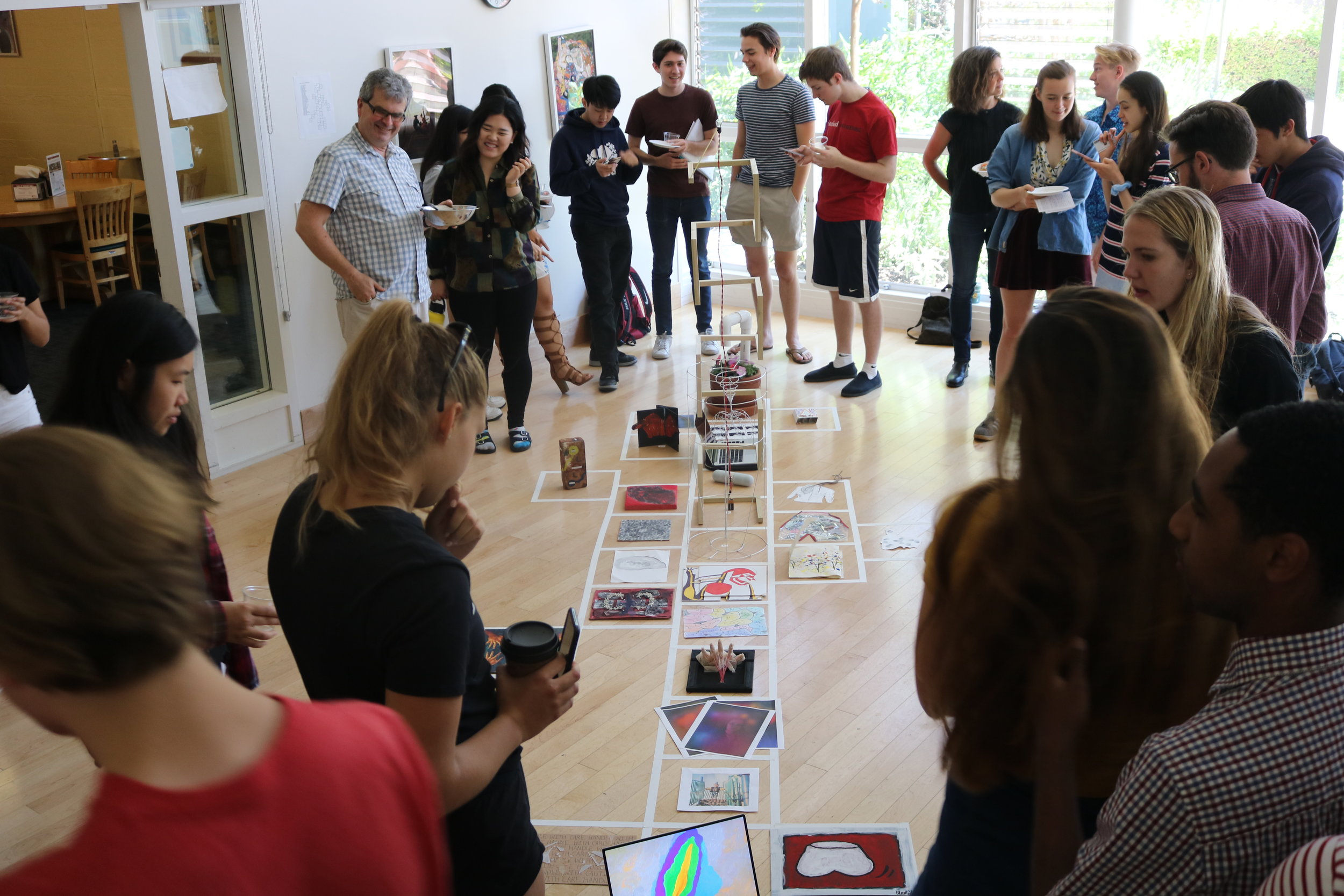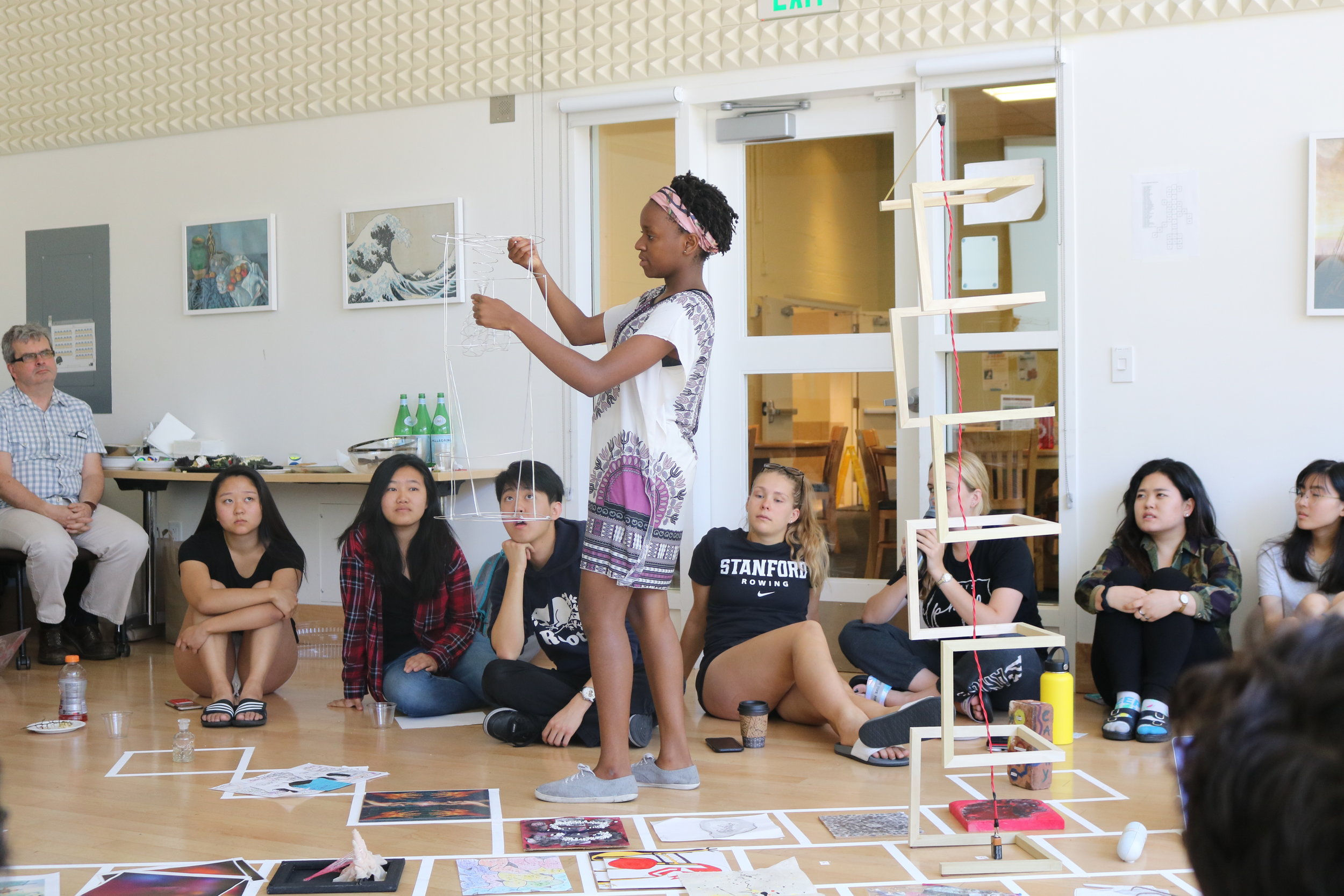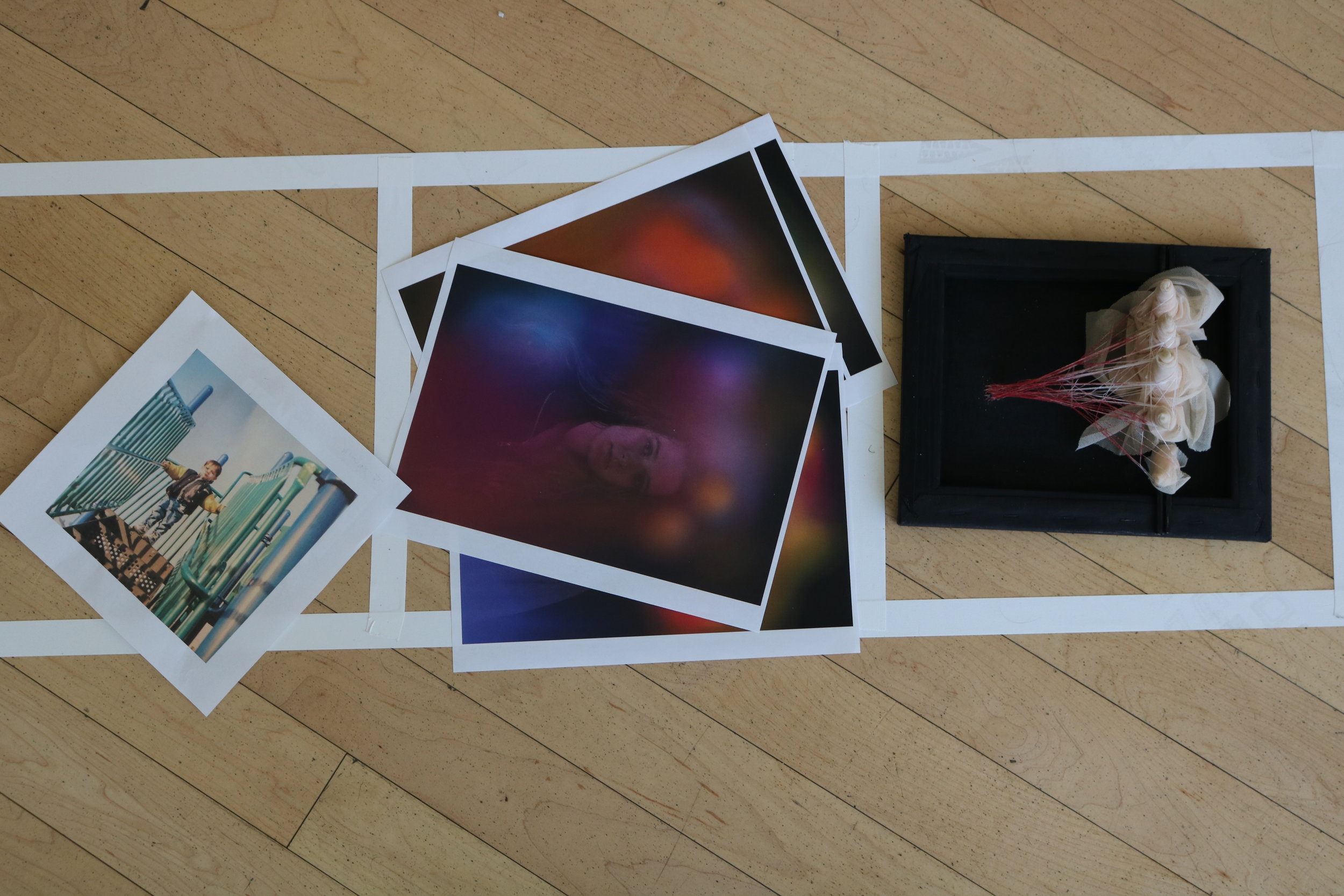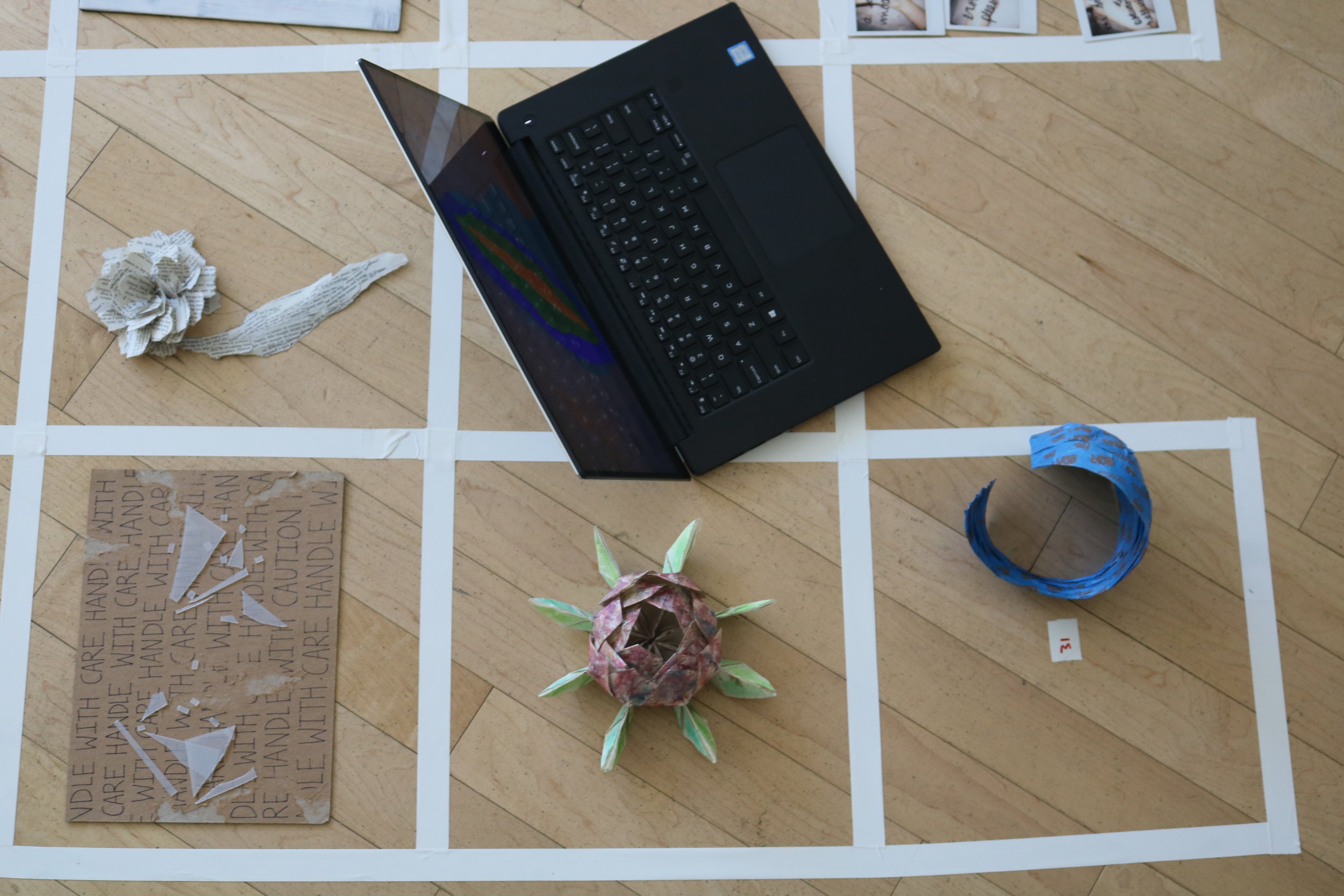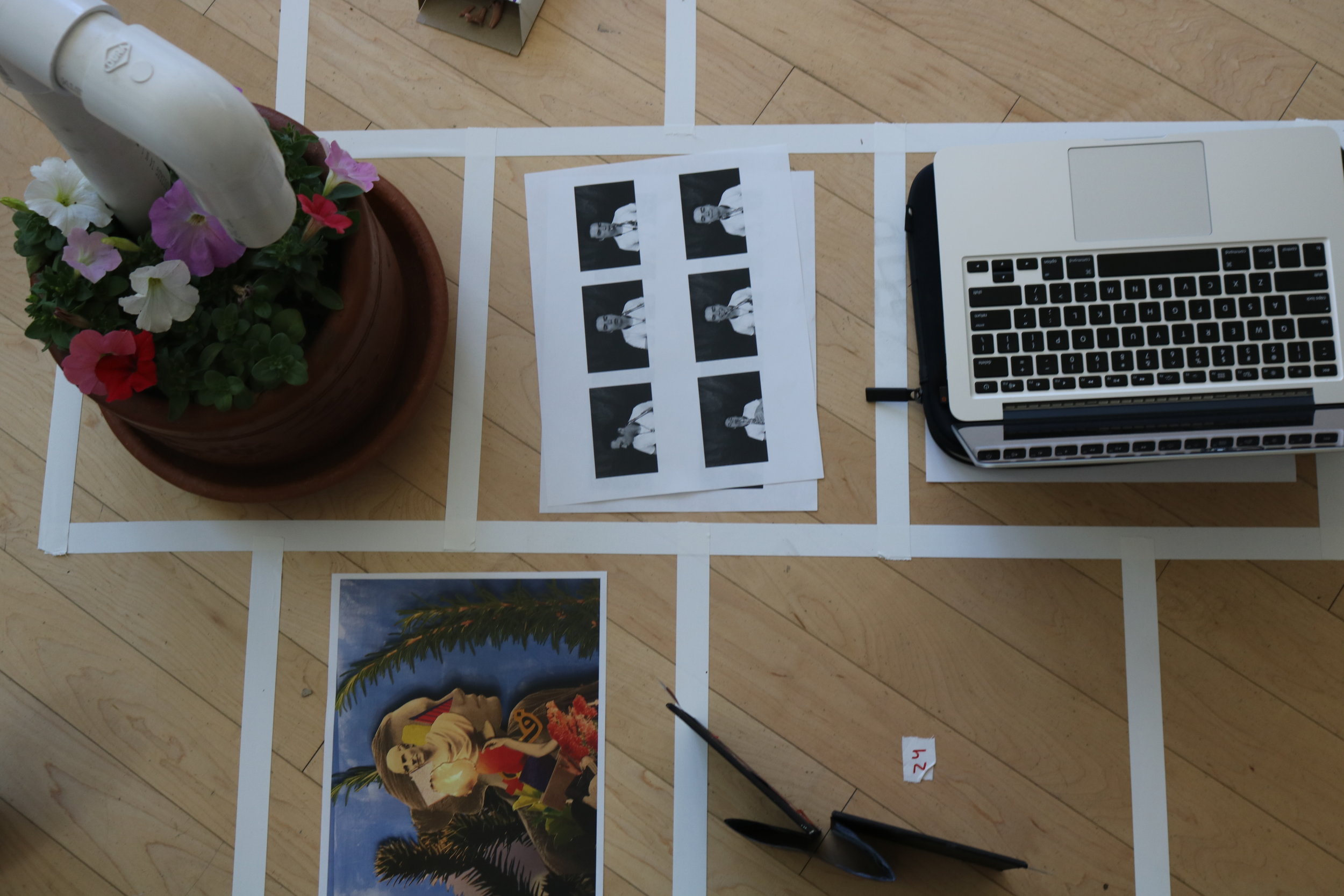Immersion in the arts: Living in culture Stanford University
*For a 2018 final project, ITALIC students created an anatomical theater for their artworks based on the body. Each student created an artwork inspired by a particular body part (a nerve, a muscle, a bone). For the live exam, students dissected (read interpreted) another student’s work.
Immersion in the Arts: Living in Culture (ITALIC) is an arts-minded, residence-based academic program for first year students at Stanford University. The program builds community by fostering close exchanges among faculty, students, guest artists, and scholars. Through in-class instruction, discussions over meals, and excursions to arts events in San Francisco, ITALIC asks big questions about the historical, critical, and practical purposes of art. We trace the challenges that works of art have presented to history, politics, culture, science, medicine, and law, particularly since the 19th century. We examine how art informs creative problem-solving, confronts uncertainty and ambiguity, and experiments with different sets of rules. Through rigorous inquiry, ITALIC creates new frameworks for exploring our (and others’) experience.
Since joining ITALIC in 2018, I’ve lectured on the following topics and select artists/writers: performative writing (Peggy Phelan, Roland Barthes); body art (Carolee Schneemann, Cassils); the art of collaboration (Forced Entertainment, Merce Cunningham); site specificity (David Ireland, Robert Smithson); race and material culture (William Pope.L); performing personas (Lynn Hershman Leeson, JT Leroy); radical architecture (Superstudio; Archigram); walking (Judson Dance Theater, Emma Sulkowicz); Meredith Monk; Samuel Beckett; socially engaged art (Suzanne Lacy, Rick Lowe). In addition to lecturing, I lead sections, plan creative curriculum, design critique rubric, and facilitate student led events.
Faculty: Karla Oeler (Art & Art History, ITALIC Director); Kim Beil (ITALIC Associate Director/Lecturer); Nicholas Jenkins (English); Jonathan Berger (Music); Ryan Tacata (ITALIC Lecturer); Alexander Greenhough (PWR Instructor).
Sample Assignment
ITALIC W/18 Final Project: Challenging Art; On Love in Three Parts
“Is one not in love with certain photographs?” - Roland Barthes | “Consider the gift. Giving should be an event.” - Jacques Derrida | “An essential portion of any artist’s labor is not creation so much as invocation. Part of the work cannot be made, it must be received; and we cannot have this gift except, perhaps, by supplication, by courting, by creating within ourselves that ‘begging bowl’ to which the gift is drawn.” - Lewis Hyde
Let’s shift our interests and concerns re: challenge into the key of love. Let’s take what ‘wounds’ us, what ‘interests’ us, the artworks we’ve devoted our research to—into—a defense of love. In this final project, we ask: How might falling in love with the objects of our analysis honor the subjective reflections and formal analysis we’ve produced? Can we challenge art by loving it?
An Ode | 200 Words | A sustained, lyrical address to a work of art (of your choosing), which moves between the critical and creative. Ode: A lyric poem, typically one in the form of an address to a particular subject.
A Gift | 2 Mins (max) | A piece of art in any medium presented as a gift to another work of art. This presentation must include a reading of your ode (live or recorded). While the gift is open to interpretation, we ask that the presentation of your gift to the work of art considers: The event of giving. How is the gift given? Where does it take place? (eg. if it’s somewhere else in the lecture hall, prepare a video). Who’s your audience? What’s the formal/conceptual relationship between your creative gift and how you give it, and how is that visible to us? How does the audience know what the artwork is? Is it represented in the ‘giving’ of the gift? Is it in the title?
A Dedication | 500 Words | A critical and creative piece of writing in the style of a dedication, using on one of the theorists or ideas explored (e.g. Barthes, Merleau-Ponty, montage, orientalism), dedicated to the work of art you’ve researched. Dedication: An inscription or form of words dedicating a building, book, etc. to a person or deity. Eg. “To Vanessa Bell but, looking for a phrase, I found none to stand beside your name.” - Virginia Woolf’s dedication in Night and Day to her sister.
Sample Student Response
Yeh-Tang Huang's performative gift to Zhang Xu's "Ji bianyi Letter about a Stomachache (Du tong tie)" (ca. 675-759). ITALIC, Stanford University. 2018.
Sample Assignment
Creative Response: Make a Gestural Portrait
Students created physicalized portraits of their partners by observing, selecting, and remixing nonverbal responses to a series of questions.
Ask your partner three questions about their past, present, and future.
Take note of three unconscious gestures during their response.
Combine these three gestures into one dance and perform them back to your partner.
